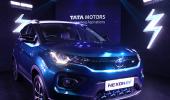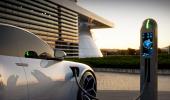From the customer point of view too, LFP batteries are safer and offer a longer life.

The announcement by Reliance Industries that it was setting up a battery gigafactory by 2026 for making battery chemicals, cells and packs with lithium ferrous phosphate (LFP) technology, among others, will give a big push to the electric vehicle (EV) industry to move from the current dominant battery technology of lithium nickel manganese cobalt (LI-NMC) to the emerging LFP battery technology, say experts.
Global EVs powered by LFP batteries could account for 40 per cent of the global market by 2030, as opposed to the estimated 17 per cent currently, according to UBS estimates.
Companies such as Tesla, Rivian and Ford are betting big on the technology.
In India, top electric two wheeler companies such as Ola Electric and Ather Energy, which form the bulk of EV sales, have been working on LFP technology for many years.
Delhi-based Okaya Electric has already become the first company in the scooter space to use LFP batteries as a key marketing differentiator against other electric scooters.
In passenger cars, Tata Motors has been using LFP batteries in all its electric cars: Nexon, Tigor and Tiago.
The largest electric car makers have the battery assembled in India by Tata Autocomp which has a JV with Chinese company Guoxuan Hi-tech.
One example is MG Motors with its recently launched affordable Comet.
Battery companies are lining up to make both kinds of batteries. They include Exide with technology from China's SVOLT, Amara Raja, and Panasonic, to name only a few.
LFP batteries enjoy certain advantages: They are cheaper to make, do not require nickel (the price of which has gone up after the Russian invasion of Ukraine -- a key supplier), nor cobalt (available mainly in the Congo where human rights violations are an issue).
In fact, the LFP cathode requires only iron and phosphate which are found abundantly across the globe and in India. Their prices are also stable.
"LFP is cheaper and safer and we have been working on it for a long while," said Ather Energy Founder and CEO Tarun Mehta.
From the customer point of view too, LFP batteries are safer and offer a longer life.
As Anshul Gupta, CEO of Okaya Electric, which was the first to use the battery in electric scooters, said, "The big difference is safety. The battery will emit smoke, but does not set the scooter on fire or explode.
"The lifecycle of the battery is at least double (7 to 10 years) that of an NMC battery."
Finally, LFP batteries are more environmentally friendly than NMC ones as there is no worry about cobalt entering the environment at any point in their disposal.
On the flip side, LFP batteries need more space for storage (although the design is being tweaked to solve this) and they have less energy density, which means their range with one charge is far lower.
This might not be an issue for electric scooters, but certainly would be for passenger cars.
Work on resolving the range issue is on.
Feature Presentation: Ashish Narsale/Rediff.com











